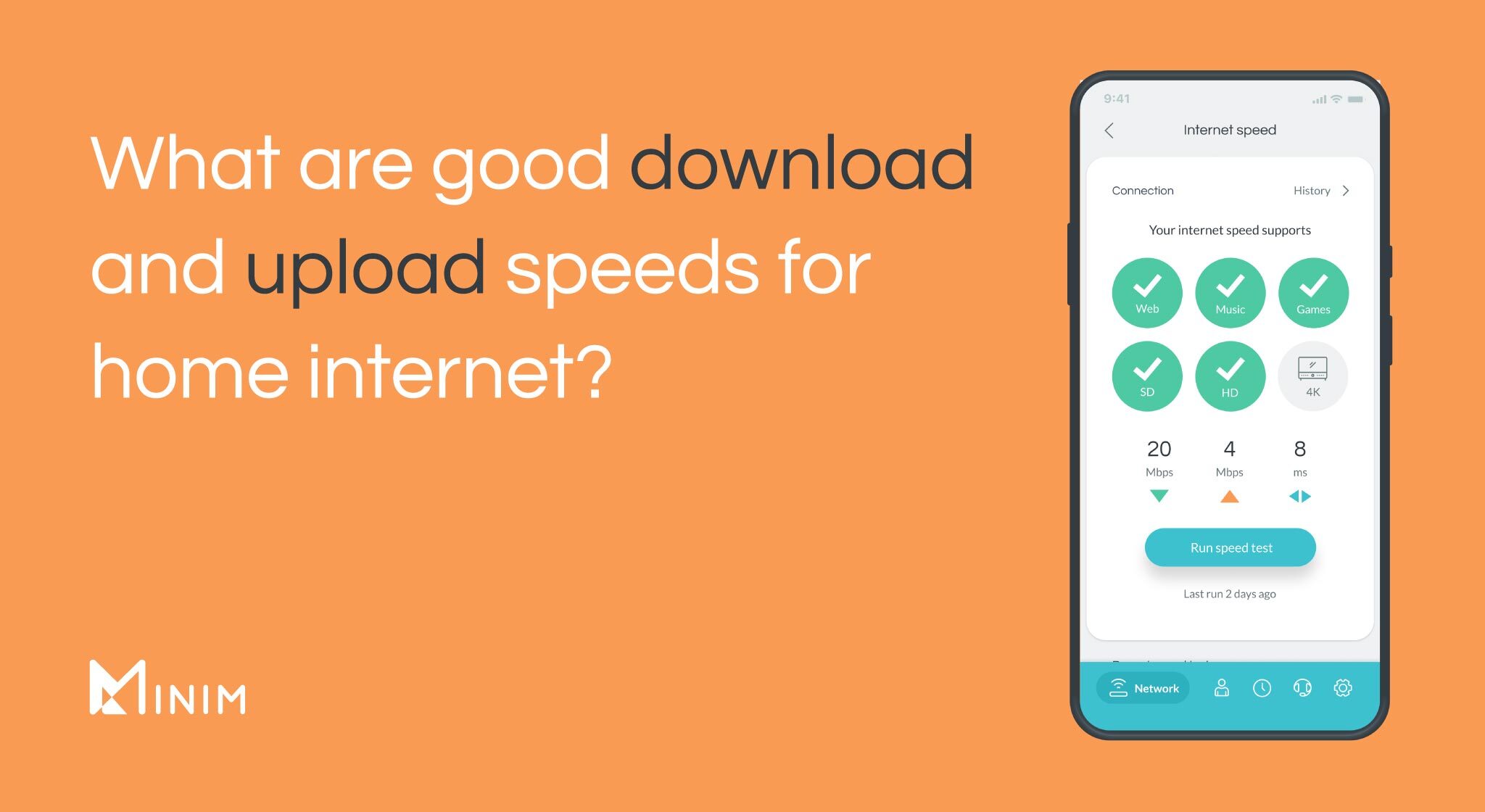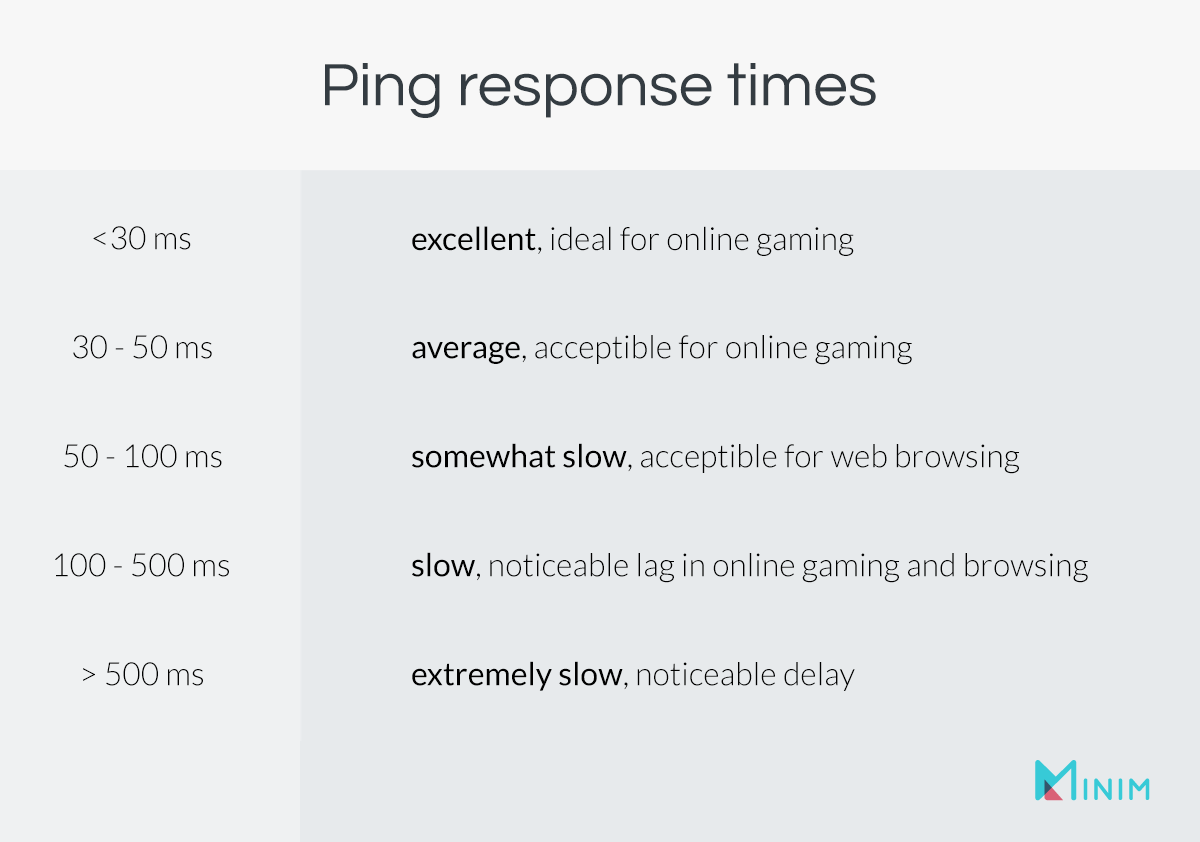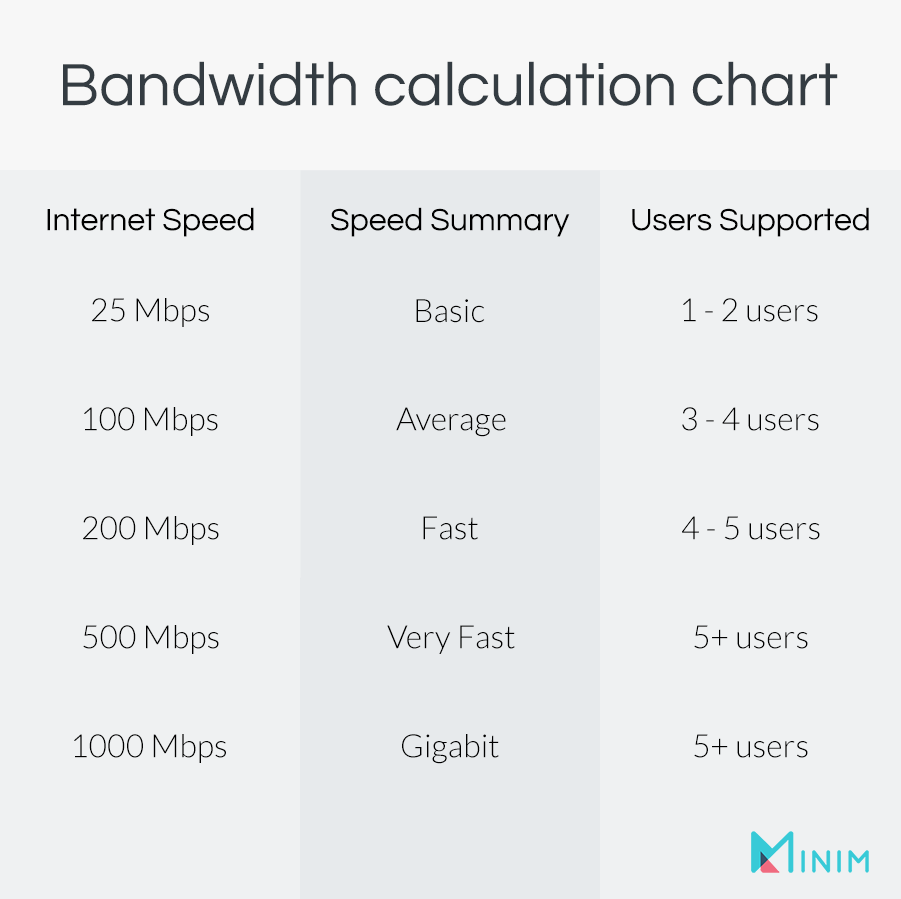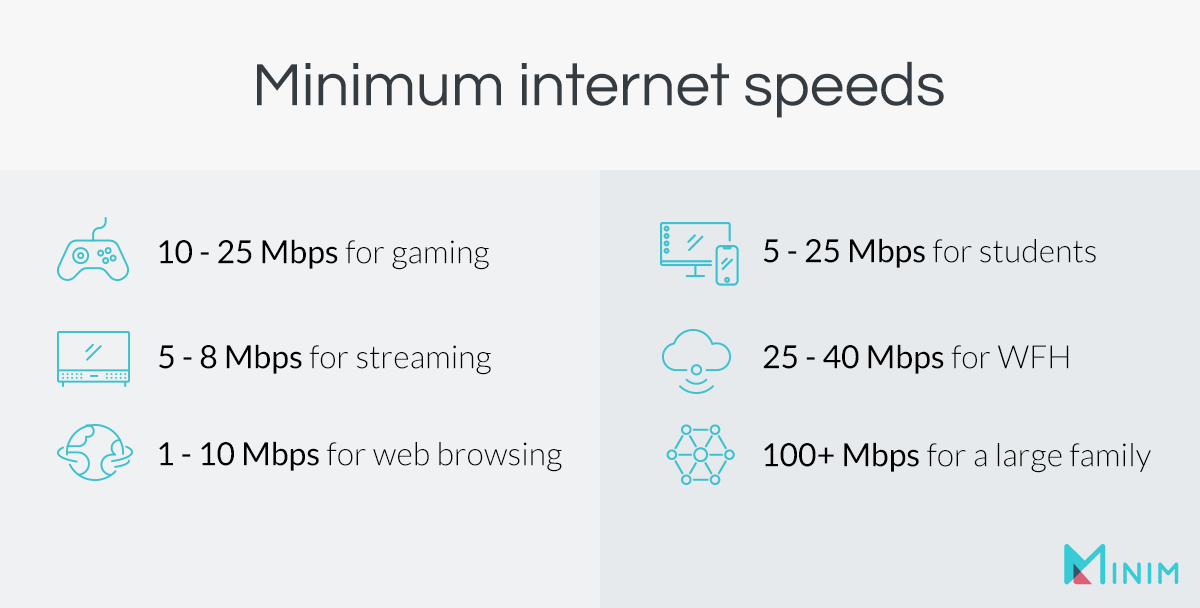
What are good download and upload speeds for home internet?
Have you ever wondered about what internet speed package you should choose for your household? Are you worried you’re paying too much for a package you aren’t using all of?
We all want fast internet, but sometimes we just don’t need the fastest service available. In this blog, we break down the terms you’ll see from your internet service provider, discuss how to test internet speeds, and guide you to a smarter, more informed purchase.

Download speed vs upload speed: what’s the difference?
Download speed refers to the speed at which your internet connection is able to retrieve data from the internet. Upload speed refers to the speed that your internet connection can allow data to be sent from your devices to the internet.
When purchasing internet packages, it’s often the download speed that’s advertised. Download speeds are much more important than upload speeds for an average internet user as most of the activity you do depends on it. Streaming videos, for example, use download speeds, whereas upload speeds are only utilized when a user is uploading a photo to social media. A user is more likely to utilize download speeds than upload speeds.
Upload speeds for home internet are often about 1/10th of the speed of your download speed.
What’s a good download speed and upload speed?
Good internet speeds are determined (and sometimes restricted) by individual needs and location of where your services are needed. For example, if your household is located in a rural area, chances are you might have a cap on the maximum speeds available for your household because of the networking infrastructure built in your area.
According to the FCC, a student would need anywhere between 5 and 25 Mbps, whereas a person who streams videos or browses the internet would only need between 1 and 8 Mbps. Mbps stands for megabits per second and is a unit of measurement for the amount of data that can be transferred every second. It’s used when determining internet bandwidth speeds.
There are many factors to take into consideration when determining what speeds are “good” for your specific situation. A household who has a gaming system might need a minimum of 10 - 25 Mbps, but might also need an additional 1 - 10 Mbps of bandwidth to support other functions that are occurring at the same time. It depends on the amount of internet users in the family who are also using the bandwidth in your home.
Other important measurements: latency and ping
When considering the quality of your broadband connection, another important measurement is latency—an important benchmark when it comes to gaming and streaming because of its ability to impact gameplay or buffer times. A lag in online gaming can have consequences, for example, but when browsing the web, it isn’t as important.
A ping test is a request for a response that’s sent to a host to measure the latency, or time elapsed, in the response. Latency is the quantifiable delay (usually measured in milliseconds) of data transfer between your local computer and a remote server. There’s a higher latency between a server in Europe versus a server in the United States, for example, even when using the same computer. The best latency speed you can have is zero.
Sometimes, the terms latency and ping are used interchangeably. Ping is also measured in milliseconds, with an average ping time landing anywhere between 30 ms and 50 ms. Ping depends on where the remote server is located that you’re trying to ping, where you’re located, and the distance between the two.

How do I find what my internet speed already is?
Do you want to know what your current internet speeds are? Are you considering an upgrade to your current services? There are some handy tools online that can help with finding your current internet speed, ping times, and even more statistics so you can make a more informed purchase.
With these free services listed below, you can even track outages and log your speeds on different days at different times. Here are some examples:
- Minim App
- Fast.com
- Ookla Speedtest
- AT&T Highspeed Internet Speed Test
- SpeedSmart
- Internet Health Test
What do I really need in my home?
Let’s be honest: choosing the right internet speed for your home depends on your budget and your needs. Below are some tips on what you should aim for when purchasing your internet package or upgrading your current internet services.
What’s a “fast” internet speed?
Any speeds that clock 200 Mbps or above are considered “fast.” Anything close to or at 1000 Mbps is considered a Gigabit speed or service. These are premium service packages and are often only available in certain areas where service providers have networks set up to sustain these speeds.
Most households don’t require this kind of speed, however. Usually, these speeds are reserved for businesses or high-traffic, high-demand networks like university campuses. The speed your household actually needs is likely less than you think.
It’s pretty standard for most of today’s households to need 25 Mbps of bandwidth speed. Of course, there are always other factors that play into your decision, and your individual needs should always be considered first.

Gaming speeds
This can be the biggest factor in a household’s needs for internet bandwidth. If you’re an avid gamer or have children who participate in online gaming matches, the minimum speed you should have is 4 - 8 Mbps. This is to keep gaming sessions free from lag, framerate drop, and crashing. We recommend anywhere from 10 - 25 Mbps if possible to ensure a smooth gaming experience that won’t affect other devices in the house trying to use the internet at the same time.
Streaming speeds
The most frustrating aspect when it comes to streaming is buffering. It can ruin movie night and lead to boredom during at-home quarantine. We recommend at least 3 to 4 Mbps for standard definition video streaming, 5 to 8 Mbps for high definition video streaming, and at least 25 Mbps for streaming Ultra HD 4K videos.
Web browsing and social media speeds
Web browsing and social media scrolling don’t take much bandwidth on a network. We recommend anywhere from 1 to 10 Mbps for these activities at any point in time.
Working from home speeds
Working from home presents a new set of challenges for the home network. From video conference calls to streaming, WFH jobs demand more than standard usage--especially when a family has children and other high-bandwidth users hogging the internet at the same time.
We recommend at least 40 Mbps for working from home. The amount of bandwidth that’s used is a lot more for large file transfers, video conferencing, streaming, emailing, computer programs, and more.

If you still aren’t sure what you need, you can use this handy calculator by BroadbandNow to determine the minimum internet speed you should have for your household.
Beyond speed: tips to improve your WiFi experience
There are a couple of options when it comes to fixing your internet speed when your WiFi speed test results aren't what you expected. The easiest and probably the first option to explore is to simply move your router to a centralized location in your home. If that isn’t possible or you’ve already tried it, you can purchase WiFi extenders or mesh networking devices for your home that will help with dead zones. Lastly, you can get in contact with your internet service provider and upgrade your service to something more suitable for your needs.
